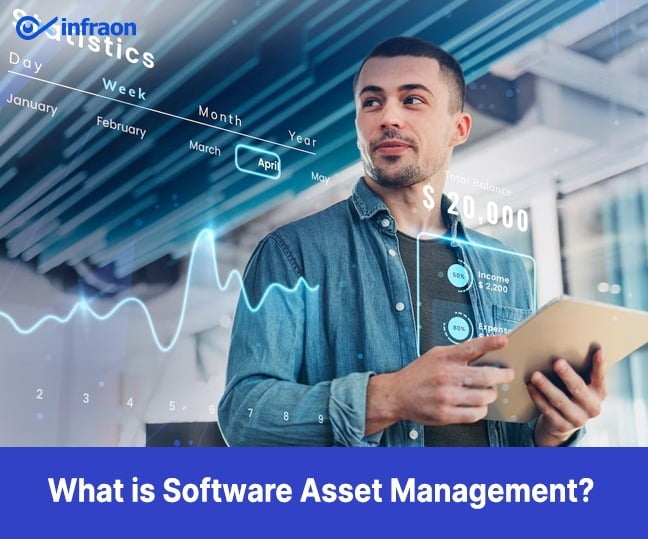In today’s digital age, IT asset discovery software is critical for any business. It helps companies track their IT assets, ensuring they are properly managed and monitored. This article will provide an overview of IT asset discovery software, how it works, and why it is crucial for businesses. We will also discuss the uses, sources, and benefits of using IT Asset Discovery. By the end of this article, you will better understand IT asset discovery and how it can help your business.
Related article: How Great IT Asset Discovery Tool can be your Business Game-Changer
What is IT Asset Discovery?
IT Asset Discovery identifies and catalogs all information technology (IT) assets within an organization. It includes hardware, software, and services used to support the business’s operations. It may also have non-IT assets such as furniture, office supplies, and other related items. Asset discovery is an integral part of IT management as it provides an accurate understanding of the resources available to the organization. By having an accurate inventory, IT managers are better able to plan, budget, and allocate resources to meet the needs of their business. Asset discovery can also identify potential security risks, as vulnerable assets can be identified and managed more effectively.
Uses of Asset Discovery
Asset Discovery is a critical process in any IT security system, as it allows you to identify potential security risks and develop strategies to address them.
- The most common use of Asset Discovery is for IT security purposes. By identifying the assets on a network, organizations can assess each one for potential security risks, ensuring that their network is safe and secure. An Asset Discovery process can also identify unauthorized assets on a network, allowing organizations to take steps to protect themselves from malicious actors.
- Asset Discovery can also be used to help organizations keep track of their hardware and software inventory. By identifying the assets on the network, organizations can ensure they are up-to-date and properly maintained. It can help save time and money, as organizations can identify what assets need to be upgraded or replaced and adjust their budget accordingly.
- Finally, Asset Discovery can be used to ensure compliance with security regulations and standards. By identifying the assets on the network, organizations can ensure that they comply with the necessary security frameworks. It can help organizations avoid costly fines or other penalties if they are found in violation.
Asset Discovery is a valuable tool for any organization. It helps organizations identify and address potential security risks, keep their inventory up-to-date, and ensure compliance with security standards. Organizations can use Asset Discovery to ensure their networks are safe, secure, and compliant.
IT Asset Discovery Sources
IT Asset Discovery sources are IT professionals’ tools and techniques to identify the hardware and software assets within an organization’s IT infrastructure. These sources can include a manual inspection of systems, automated scanning of networks, use of third-party software, and hardware inventory systems.
- Manual inspection is the most basic form of asset discovery and can be done on-site or remotely. It involves a technical expert manually inspecting each device to determine the hardware, software, and configuration present. This approach is helpful for smaller networks or when the scope of the asset discovery is limited.
- Automated scanning is a more comprehensive approach to asset discovery. It involves using software to scan the network and identify all hardware and software assets. This approach is helpful for larger networks or when more comprehensive information is desired.
- Third-party software is often used in conjunction with automated scanning to provide additional detail about the hardware and software being discovered. It can include information about operating system versions, installed applications, and patch levels.
- Hardware inventory systems are often used to keep track of physical assets such as desktops, laptops, and servers. These systems can provide detailed information about the hardware and software installed on each device. This information can be used to track warranty and license information and provide an audit trail if required.
IT Asset Discovery sources are essential tools used by IT professionals to identify, track, and manage the hardware and software assets within an organization’s IT infrastructure. The right combination of sources will help ensure that all assets are tracked and managed correctly.

Benefits of IT Asset Discovery
The benefits of IT asset discovery are numerous. It can help organizations reduce the complexity of their IT environment, discover hidden assets, and identify security risks. It can also help organizations identify hardware and software assets and manage them effectively and improve the efficiency and effectiveness of IT management processes.
With IT asset discovery, organizations can get an accurate view of their IT environment, including both physical and virtual assets. This helps organizations better understand their IT infrastructure and make decisions about IT investments and upgrades. It also allows organizations to identify redundant or obsolete software and hardware, reducing maintenance costs.
IT asset discovery can also help organizations track software license compliance and ensure they are not overspending on software licenses. In addition, it can be used to identify security risks, such as unpatched software or unauthorized devices. This information can be used to develop a security plan and reduce the risk of security breaches.
Finally, IT asset discovery can provide organizations with a better understanding of their IT environment and the associated costs. This information can then be used to make better decisions about IT investments and upgrades, as well as to develop more efficient and effective IT management processes.
Related article: The Top 10 Essential Asset Management System Requirements in 2023
Final Note
IT Asset Discovery software provides an invaluable service to businesses looking to manage their network, and IT resources better. With its ability to quickly scan and identify all of the hardware and software on a network and track and monitor all changes made, IT asset discovery software can help businesses save time and money while ensuring their IT environment is secure and compliant. Investing in IT asset discovery software is an invaluable decision for companies looking to take control of their network.
FAQs
What type of software can be used for asset discovery?
AI-powered asset discovery software can quickly and accurately identify assets, locations, and network configurations. It can also uncover hidden assets and map out all the interconnections between them. Additionally, AI-powered asset discovery software can detect and alert to any changes, such as new assets being added or existing assets being modified, to help ensure the most up-to-date and secure IT environment. AI-powered asset discovery software can also scan for vulnerabilities and offer remediation recommendations, making it an excellent tool for improving security and compliance.
Asset discovery software empowered with AI can track, identify, and manage all the physical and logical components of a company’s IT infrastructure. It can accurately identify network assets, relationships, and current state, helping organizations maintain IT security and compliance requirements.
It can automatically scan networks and detect new assets, including hardware, software, and virtual machines. It can also discover wireless access points and connected devices and alert users of unauthorized asset connections.
AI helps track and report asset usage and utilization and generates reports to help organizations make better decisions about their IT infrastructure. It can also be used to create alerts for software compliance and security issues and monitor for changes in asset configurations and usage.
What is a passive asset discovery tool?
A passive asset discovery tool is a software program used to detect the presence of networked devices on a network without actively probing the devices. It works by passively listening to traffic on the local area network (LAN) and inferring the presence of devices from the traffic. Passive asset discovery tools can detect devices such as computers, printers, switches, routers, and other network devices. The advantage of passive asset discovery tools is that they can detect devices without requiring any active probing of the network devices, which can be disruptive or even dangerous in some situations. Passive asset discovery tools are essential to network security and can be used to detect unauthorized devices on the network.
What is the best asset management software to choose?
The best asset management software for your business depends on the size of your organization and the type of assets you need to manage. For smaller companies, several free or low-cost asset management software solutions are available. These solutions can help you track and monitor your assets, but they may not have all the necessary features. For medium and larger businesses, more comprehensive asset management software is available. These solutions are designed to provide full tracking, monitoring, and reporting capabilities. When selecting an asset management software solution, you should consider the following factors:
- Scalability: Consider the number of assets you need to manage. Does the software have the capacity to grow with your organization?
- Security: Does the software have measures to ensure your data’s security and privacy?
- Reporting: Does the software provide reporting capabilities to help you better understand your assets?
- Cost: What is the total cost of the software, including setup, maintenance, and support?
- User-Friendliness: Is the software easy to use? Does it have a user-friendly interface?
Finally, consider your business needs and objectives. Ensure the software you select meets your specific requirements and provides the features and capabilities you need.


















